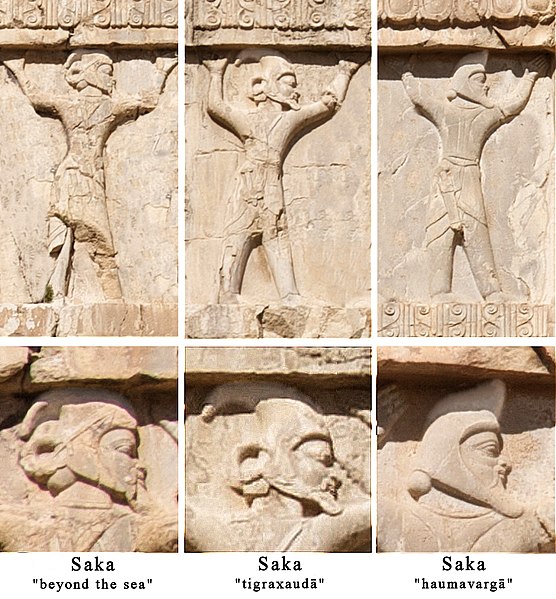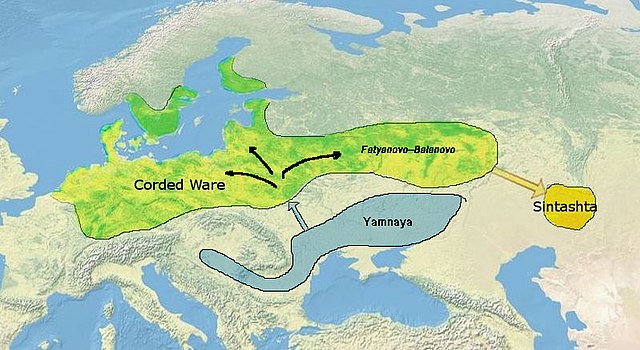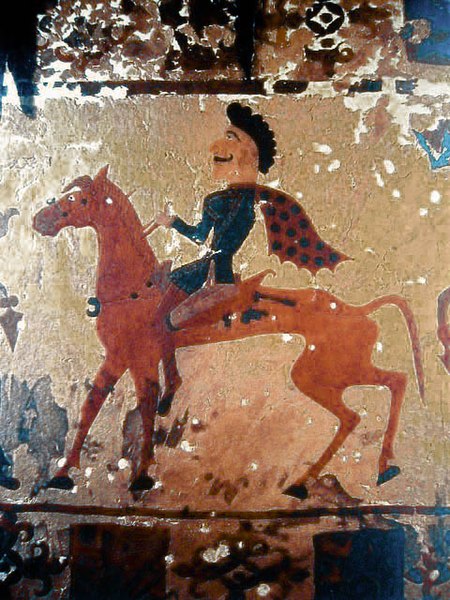The Scythians or Scyths in composition) and sometimes also referred to as the Pontic Scythians, were an ancient Eastern Iranic equestrian nomadic people who had migrated during the 9th to 8th centuries BC from Central Asia to the Pontic Steppe in modern-day Ukraine and Southern Russia, where they remained established from the 7th century BC until the 3rd century BC.
Maximum extent of the Scythian kingdom in West Asia (680–600 BC)
Maximum extent of the Scythian kingdom in the Pontic steppe (600–c. 200 BC)
For the Achaemenids, there were three types of Sakas: the Sakā tayai paradraya ("beyond the sea", presumably the Scythians between the Greeks and the Thracians on the Western side of the Black Sea), the Sakā tigraxaudā (Massagetae, "with pointed caps"), the Sakā haumavargā ("Hauma drinkers", furthest East). Soldiers in the service of the Achaemenid army, Xerxes I tomb detail, circa 480 BC.
Curled-up feline animal from Arzhan-1, circa 800 BC.
The Iranian peoples or Iranic peoples are a diverse grouping of peoples who are identified by their usage of the Iranian languages and other cultural similarities.
The Bistun Inscription of Darius the Great describes itself to have been composed in Arya [language or script].
Early Indo-European migrations from the Pontic steppes and across Central Asia.
According to Allentoft (2015), the Sintashta culture probably derived from the Corded Ware culture.
Saka horseman, Pazyryk, from a carpet, c. 300 BC





![The Bistun Inscription of Darius the Great describes itself to have been composed in Arya [language or script].](https://upload.wikimedia.org/wikipedia/commons/thumb/0/04/Darius_I_the_Great%27s_inscription.jpg/640px-Darius_I_the_Great%27s_inscription.jpg)


